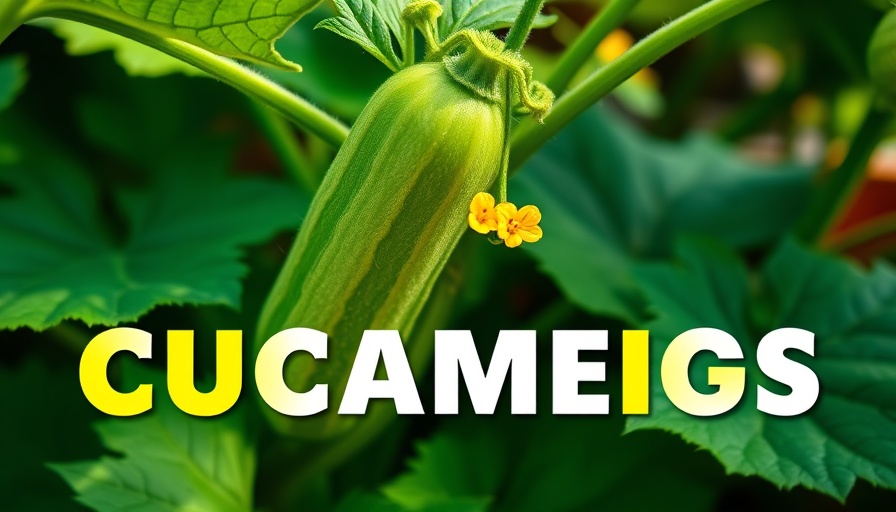
The Secret Life of Cucumbers: Understanding Males and Females
Cucumbers often seem like a simple addition to your garden, but the dynamics between male and female plants can significantly impact your yield. Understanding these differences is crucial for Okanagan gardeners who strive for a bountiful harvest. As it turns out, while male cucumber flowers dominate the visuals—showy and plentiful—they aren't the key players in producing the fruit we enjoy. Instead, female flowers are the stars of the show, responsible for developing the cucumbers we cherish. This article explores how to boost female flower production and consequently enhance your cucumber yield.
In 'Cucumbers That NEVER Stop,' we explore the intriguing dynamics between male and female cucumber flowers, providing insights that inspired a deeper analysis of how to enhance yields.
The Gender Imbalance in Cucumbers
Research reveals a staggering statistic: for every female flower, there are approximately ten males! This natural imbalance can cause gardeners to feel frustrated when harvest time arrives, but understanding this phenomenon is the first step toward combating it. More male flowers may look plentiful, but they can hinder your overall yield. Our strategy should focus on increasing the number of female flowers to remedy this imbalance and ensure a successful cucumber harvest.
Ganatious Varieties: The Key to Higher Yields
One effective way to tilt the scales in favor of female cucumber flowers is to opt for ganatious varieties. These are specially bred to produce more female than male flowers, leading to an increase in cucumber yields by up to 40%. By planting these varieties, Okanagan gardeners can bypass the overwhelming presence of male flowers and focus on the productive female ones.
The Role of Environmental Factors
Temperature plays a significant role in determining the sex of cucumber flowers. Cooler soil temperatures, between 20 to 25°C, coupled with shorter days, promotes female flower production. To create an ideal environment, consider adding a thick layer of mulch. Doing so can help lower soil temperature and support more female flower growth, keeping your garden blooming as the season progresses.
Stress Management: The Ethylene Connection
It's fascinating how stress—yes, the kind we often want to avoid—can actually boost female flower production in cucumbers. When cucumber plants are stressed (in a controlled manner), they release ethylene, a natural hormone that encourages the development of more female flowers. One way to induce this stress is by reducing nitrogen fertilizer. This slight alteration can lead to a remarkable increase in female flowers, effectively transforming your cucumber yield!
Fertilizer Choices: The Nutrient Balancing Act
Not all fertilizers are created equal, especially when it comes to cucumber flowers. Excess nitrogen can reduce female flower production, while phosphorus can increase it. Okanagan gardeners should consider choosing fertilizers that are lower in nitrogen and higher in phosphorus. This balanced approach can create an ideal environment for encouraging those crucial female flowers to bloom.
Boosting Pollination: The Unsung Hero of Cucumber Growth
Imagine spending months caring for your garden, only for your cucumbers to end up deformed due to poor pollination. That's where pollinators like bees come in. Increasing the diversity of plants in your garden can help attract more pollinators, thus improving the chances for complete pollination. A well-pollinated cucumber will yield beautiful, straight fruits, enhancing both your gardening experience and the quality of your harvest.
Time to Maximize Your Cucumber Potential!
In an environment where major yield increase strategies are vital, understanding the nuances of male versus female cucumber flowers is invaluable. Incorporating ganatious varieties, managing environmental conditions, adjusting fertilizer types, and enhancing pollination efforts all highlight just how strategic gardening can be.
With these insights, Okanagan gardeners can take proactive steps to cultivate healthier, more productive cucumber plants. As you embark on this journey, remember that every choice—from seed type to environmental setup—can lead to more female flowers and ultimately a better harvest.
 Add Row
Add Row  Add
Add 




Write A Comment